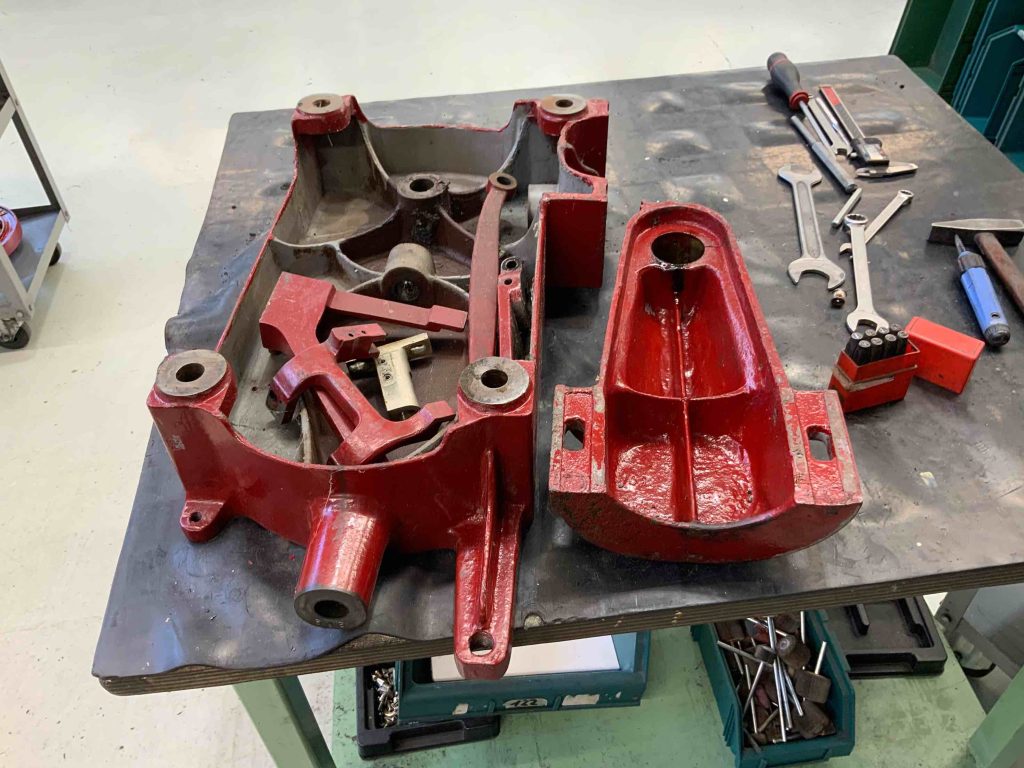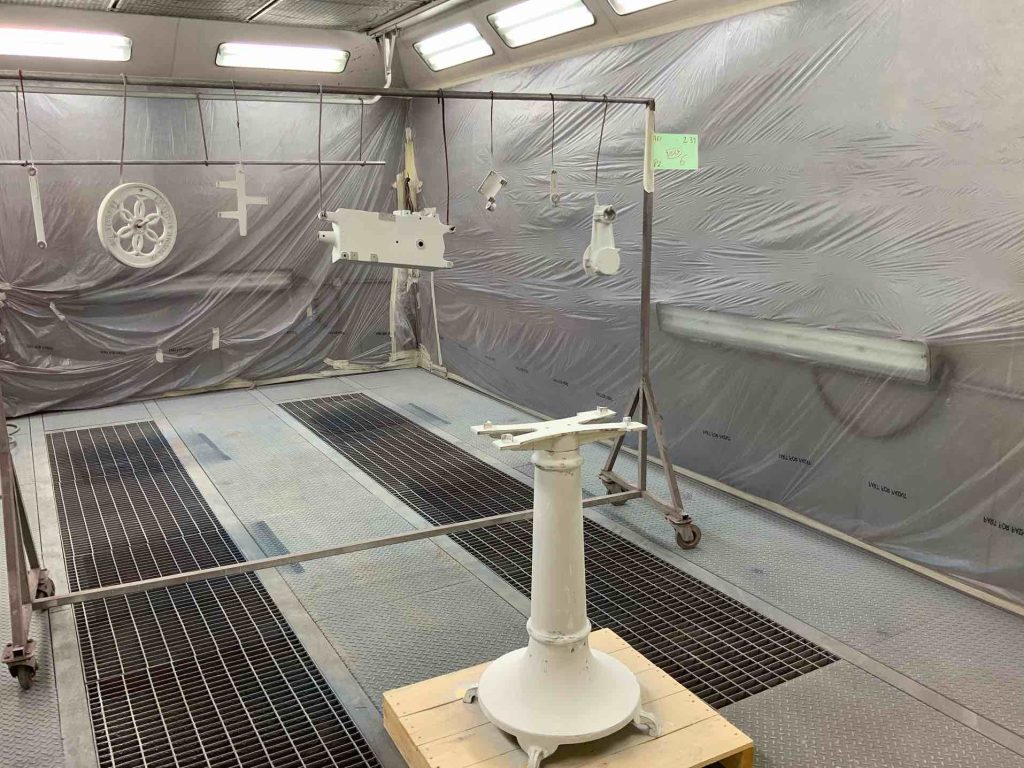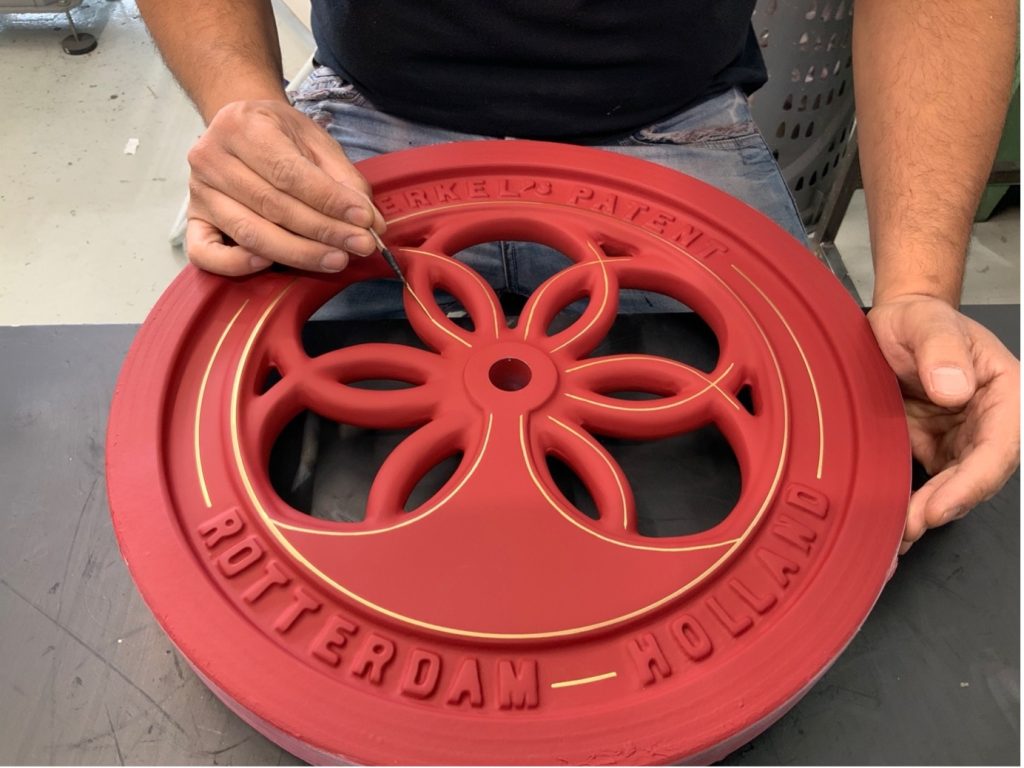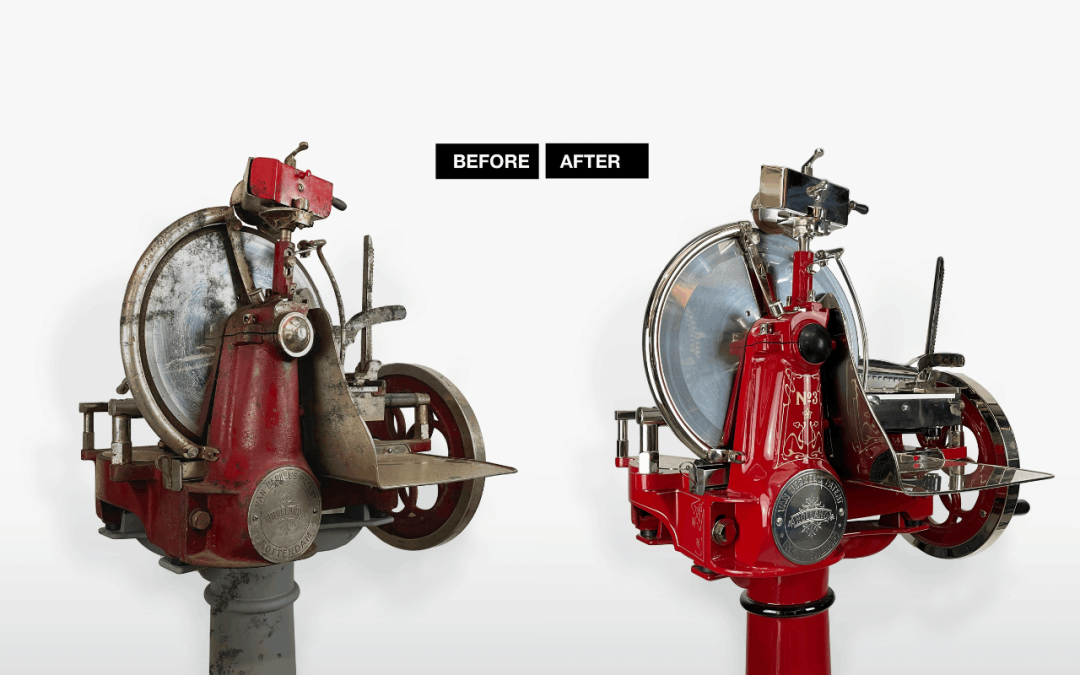Know-how, expertise and qualified teamwork
Restoring a Van Berkel flywheel slicer means bringing authentic vintage meat slicers, some made more than 100 years ago, back to their original characteristics. In many cases these are unique and rare pieces. They aren’t just working tools, they are furnishing and functional art objects that take us back to that unique atmosphere of vintage food specialty shops, often associated with Italian quality food tradition. They are fascinating objects, able to combine aesthetics with extreme precision in cutting, even when subject to an intense use.
Van Berkel slicing machines restoration is not an easy task. It is necessary to know in great detail the mechanics of these machines, and how to disassemble them with care. It requires deep experience and outstanding manual skills.
Restoring whilst maintaining an exclusive quality process
The restoration process of the slicing machines involves several stages, plus a final stage of assembly. Every phase is essential for the success of the restoration and for the long-life span of a Van Berkel slicing machine, regardless of the type of use.
When starting the restoration of a Berkel slicer, the machine is completely disassembled with the greatest attention. Each slicing machine has hundreds of pieces and every single piece is removed, carefully checked, and then repaired, or in case of severe damage replaced, so that each and every part of the machine works properly.

Disassembly phase whilst restoring a Van Berkel original meat slicer
It is necessary to repaint each component (case, body, shoulder, support for adjustment of the cut, connecting rods).
In order to perform a good painting operation, all components need to be sandblasted and thus brought as close as possible to their original state.
It is important to know that one of the major components of these machines is cast iron, an extremely porous material, which is treated with care to prepare the basis on which the paint will adhere. Manual grouting allows to standardize these old castings, which at the time of their production, in some cases more than 100 years ago, were handmade and not as perfect as modern castings.
The polyester base is the surface where the first coat of paint is applied, which is key for the adhesion of all subsequent coats of painting. The base varnish has a thickness of a few microns and its smoothness contributes to even out the surface of the Berkel slicer.

Careful painting of a restored Van Berkel meat slicer
The external part of the machine is painted using matt-based hydro paints, which allow, under careful observation, to detect and correct any imperfection such as porosity or lack of paint, in order to obtain the best result. The main paint colors used are red, the traditional color that has become well known and associated to the Van Berkel brand, as well as black or cream. In the Van Berkel tradition, red slicers were used to cut beef, the black ones were used for cold cuts and the cream-colored slicers were used in dairy shops for cutting cheese.
The painting phase proceeds with manual decoration. Decals faithful to the original decorations are used on the oldest models, and are applied on the matte hydropaint base, by spraying it with an airbrush.

Hand decoration of a Van Berkel slicer flywheel
In the case of the most prestigious models, decorations are handmade with thread brushes (brush with long bristles, ¾ cm that hold the paint, to obtain perfect brushstrokes and avoid smearing) – these are the brushes that were once used to decorate antique machinery and porcelain.
11 coats of paint are applied in total, the last one being the transparent varnish for polishing.
The next step regarding the restoration of a Berkel vintage slicer consists of re-plating of iron and aluminum components (including the smallest details, such as individual screws). To achieve the best result, first there is the copper plating phase, in which copper is used to seal all porosities that exist on aluminum, cast iron and iron, to avoid oxidation and rust, then the nickel plating, and lastly the chrome plating on models built after the 1930’s.
After painting and plating comes the assembly phase, in which mechanics plays a vital role: Van Berkel vintage flywheel slicers work thanks to a high precision mechanism activated manually, which consists of gears at the base of the machines that move both the tray and the blade.
Disassembled at first, once all pieces have been restored they need to be assembled again. It takes the mastery of experienced artisans, who know the slicers’ mechanism perfectly, to put everything together in the right place.
In average, we dedicate 150 hours to each restoration. It’s a job done with passion, attention to detail, and with the responsibility of using a proven process and the best materials.
Finally, a fully restored authentic Berkel slicer is 100% functional and ready to be used in the most exclusive food specialty shops, restaurants, hotels, or at home, as a unique piece of decoration and a precise slicing machine.


